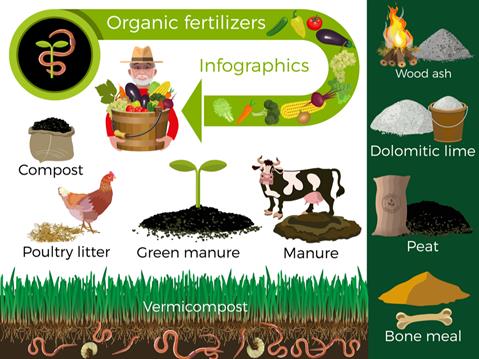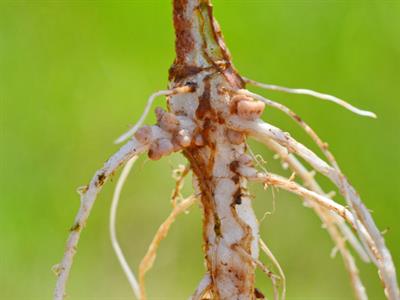
PUMPA - SMART LEARNING
எங்கள் ஆசிரியர்களுடன் 1-ஆன்-1 ஆலோசனை நேரத்தைப் பெறுங்கள். டாப்பர் ஆவதற்கு நாங்கள் பயிற்சி அளிப்போம்
Book Free DemoFertilisers
Fertilisers are commercially produced plant nutrients, which supplynitrogen (N), phosphorus (P) and potassium (K) to the soil.
Example:
Urea, Ammonium sulphate, Superphosphate, potash, NPK (Nitrogen, Phosphorus, Potassium).

Spraying fertilisers
Advantages of fertilisers:
- Easily available, easy to use and store.
- Produces higher yields of crop that is equivalent to high-cost farming.
- Ensures good vegetative growth (leaves, branches and flowers) that gives rise to healthy plants.
Disadvantages of fertilisers:
- Need to be applied carefully in terms of proper dose, time, and after the pre and post-application precautions for complete utilisation. For example, fertilisers cause water pollution when they get washed away when the plants do not fully absorb them due to excessive irrigation.
- Continuous use of fertilisers in an area destroys soil fertility as the organic matter present in the soil is not replenished. Thus, microorganisms in the soil are harmed.
- Fertilisers provide only short-term benefits.
Thus, to maintain soil fertility, short term benefits of using fertilisers and long-term benefits of using manure are considered to aim at optimum yields in crop production.
Organic farming:
Environment-friendly farming system with minimal or no use of fertilisers, herbicides, pesticides etc. Organic manures, recycled farm-wastes (straw and livestock excreta) are used maximum. Healthy cropping systems [mixed cropping, inter-cropping and crop rotation] are beneficial in insect, pest and weed control besides providing nutrients. The organic matter used in organic farming includes:- Manure
- Bio-fertilisers formed by the use of bio-agents like a culture of blue-green algae, Rhizobium in legumes.
- For grain storage purposes, neem leaves or turmeric are used as bio-pesticides.

Organic fertilisers
Leguminous crops that include the pulses - cowpea, pigeon pea, peas, chickpeas (gram), and the soya bean contain nitrogen-fixing bacteria in their root nodules.

Rhizobium in root nodules
These nitrogen-fixing bacteria fixes nitrogen in the soil which is usable (converts atmospheric nitrogen to soluble nitrogenous compounds - ammonia). Examples of nitrogen-fixing bacteria include rhizobium. Thus, leguminous plants does not need nitrogenous fertilisers.